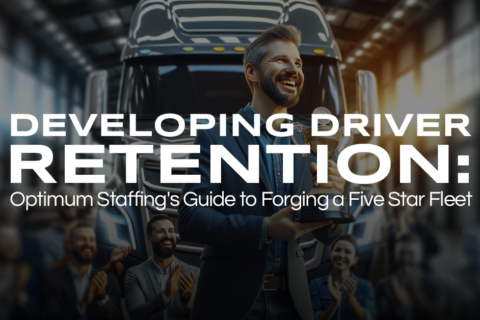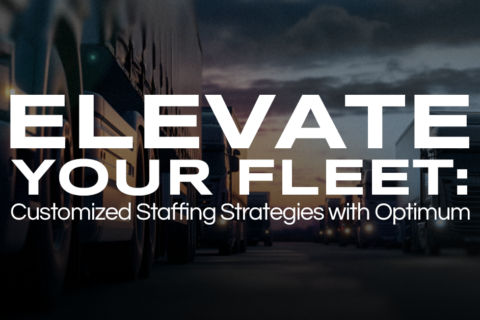Developing Driver Retention: Optimum Staffing’s Guide to Forging a Five Star Fleet
Mastering Truck Driver Retention: A Guide by Optimum Staffing In the vast and ever-evolving world of logistics and transportation, the quest to find and keep top-tier CDL truck drivers is akin to the navigating our nation’s complex network of highways. With the American Trucking Associations highlighting a steep driver shortage post-pandemic, expected to potentially double by 2030, the industry faces a challenging journey ahead. Yet, the path is not without its guideposts and strategies looking ahead to ensure a smoother ride for all of us. Join us as we embark on an insightful journey, exploring the intricacies of commercial truck driver recruitment and the keys to ensuring long-term driver retention. The Challenge of Finding Qualified Truck Drivers The current landscape presents a few roadblocks in attracting new talent to the trucking profession. Most notably, it’s the fact that a significant portion of the workforce is quickly approaching retirement age, leaving some big shoes to fill for oncoming generations of drivers. Our nation’s trucking heritage has formed much of our world and economy into what it is today. Additionally, the industry’s efforts to diversify its ranks, particularly by increasing female participation, have yet to shift into high gear and have a noticeable impact. Beyond this, even four years later, the ripple effects of the pandemic continue to be felt and have further slowed down the pipeline of new CDL holders, ready to hit the road. While much of this feels like the odds are stacked against the industry, fear not, for every challenge presents an opportunity to innovate and adapt. Why Truck Drivers Might Look for New Horizons When you step back, it’s no surprise that our nation’s driving professionals are deemed backbone of the economy, yet many find themselves seeking alternative routes outside the transportation industry. Factors contributing to this trend include the longing for more time at home, frustrations with infrastructure and logistics, and a burgeoning labor market offering a myriad of employment options. Understanding these motivations is crucial for developing effective retention strategies. While much of the industry has evolved in lockstep, this new generation of drivers are bringing some new changes and with that, new challenges for carriers. Fueling Driver Retention: Beyond the Paycheck While competitive compensation will likely always remain the cornerstone of driver satisfaction, there are some new cards available for carriers to play with. In our current climate, fostering a culture of respect and appreciation have risen up the ranks and now play equally vital roles. Where a good payout may have been more than enough in days gone by, there’s much more to consider today. The following are five shifts we’ve discovered that have the potential to enhance driver retention, as suggested by research and industry insights: Charting the Course with Optimum Staffing Navigating the complexities of truck driver recruitment and retention requires a seasoned navigator. Optimum Staffing is your ideal partner on this journey, offering custom solutions tailored to your unique needs, experience driven industry insights, and a commitment to fostering meaningful connections between companies, carriers and our thriving network of industry leading drivers. Our homegrown approach addresses the critical aspects of the recruitment process, from identifying your ideal candidates to ensuring their seamless integration into your existing team, all while prioritizing their long-term satisfaction and growth. Accelerating Towards a Future of Fulfillment While it’s easy to conclude that the road to addressing the truck driver shortage and enhancing retention is paved with some seemingly daunting challenges, it’s important to remember that there exists abundant opportunities for innovation and growth. By embracing Optimum’s comprehensive recruitment strategy and going beyond mere compensation you’re sure to be on your way to building a more resilient, satisfied, and dedicated workforce that is sure to get your job done, whatever that may look like. Ready to revamp your recruitment and retention strategies with a trusted partner by your side? Optimum Staffing stands ready to guide you through every twist and turn, ensuring your journey leads to success and satisfaction for both your company and your invaluable drivers. Let’s drive forward, together. If you made it to this part of the post, we’d just like to take a moment to thank you for taking the time to read this article. Be safe out there and as always, If you’re in search of CDL A, B, or warehouse positions, check out our open positions. And if you need staffing solutions for commercial driving or industrial positions, be sure to explore our offerings.











Recent Comments